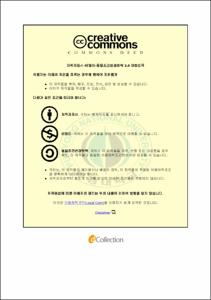Rotor Speed Estimation Based on Extended Kalman Filter for Vector Control of Induction Motor
- Alternative Title
- 유도전동기의 벡터제어를 위한 확장칼만필터에 기반한 회전자속도추정
- Abstract
- In this dissertation, the following problems are considered. The first one is to present the mathematical model of induction motor. The second one is to present two basic methods of vector control, direct field oriented control and indirect field oriented control. For high performance control of AC induction motor, the third one is to present sensorless vector control of AC induction motor based on extended Kalman filter (EKF) technique. The last one is to present hardware design for simulation and experiment.
A simple control scheme such as the scalar method (V/Hz constant) has limitations on the performance. To achieve better dynamic performance, a more complex control scheme known as vector control needs to be applied to control the induction motor. For detailed explanation of the fundamental principles involved in vector control, the mathematical model of induction motor based on space vector notation is given. By transformation from stationary coordinate that fixed to stator to rotating coordinate that fixed to flux-oriented vector (stator-flux, rotor-flux or magnetizing-flux), the torque generating current and the flux generating current is decoupled. Therefore, the torque and the flux can be controlled independently.
There are basically two different types of vector control techniques: direct and indirect field oriented controls. In the indirect field oriented control (IFOC), the slip estimation with measured or estimated rotor speed is required in order to compute the synchronous speed. There is no flux estimation in IFOC. In the direct field oriented control (DFOC), the synchronous speed is computed based on the flux angle which is available from flux estimator or flux sensors. In contrast to direct methods, the indirect methods are highly dependent on machine parameters. Many applications use indirect method, because they have relative simpler hardware and better overall performance at low frequency than direct method.
In the case of sensorless vector control, the estimators for rotor speed and parameters of AC induction motor based on EKF technique are given. Two estimator models based on EKF are proposed. In the first model, the rotor speed is estimated with assumption that all parameters of AC induction motor are well known and their values are constants. In this model, the stator currents, the rotor flux linkages and the rotor speed are state variables. In the second model, the stator resistance that depends on the operating condition is considered. Besides the stator currents, the rotor flux linkages and rotor speed, the stator resistance and the load torque are augmented to the second model. In both EKF based models, the stator currents are measured as outputs whereas the stator voltages are control inputs.
Hardware for the proposed system is introduced. Hardware is designed to control 1.5 Kw AC induction motor. The TMS320F28335 DSP is selected as the digital controller for the system. Necessary peripheral and interface circuits are built for signal measurement, the three-phase inverter control and the system protection.
Finally, simulation and experimental results have been done to demonstrate the effectiveness of the proposed controller and its applicability.
Keywords: Induction Motor, Vector Control, Field Oriented Control (FOC), Extended Kalman Filter (EKF), Stator Resistance Identification.
- Issued Date
- 2013
- Awarded Date
- 2013. 8
- Type
- Dissertation
- Publisher
- 부경대학교
- Alternative Author(s)
- 푹 턴 도안
- Affiliation
- 대학원
- Department
- 대학원 메카트로닉스공학협동과정
- Advisor
- 김상봉
- Table Of Contents
- Contents
Acknowledgements
Contents i
Abstract iv
List of Figures vii
List of Tables x
Nomenclatures xi
Chapter 1: Introduction 1
1.1 Background and Motivation 1
1.2 Objective and research method of this dissertation 9
1.3 Outline of the Dissertation and Summary of Contributions 12
Chapter 2: Mathematical Model of Induction Motor 14
2.1 Introduction to Motor Drive System 14
2.2 Clarke and Park Transformations 15
2.3 Mathematical Model of Induction Motor 19
2.4 Induction motor model in stationary coordinate system 25
Chapter 3: Vector Based Control Methods 28
3.1 Introduction to Vector Control 28
3.2 Mathematical Equations of Induction Motor in Rotor-Flux-Oriented Reference Frame 29
3.3 Indirect Field Oriented Control 32
3.3.1 Current Model Design 33
3.3.2 Simulation Results 35
3.4 Direct Field Oriented Control 41
3.4.1 Flux Estimator 42
3.4.2 Simulation Results 45
3.5 Summaries 53
Chapter 4: EKF Based Sensorless Vector Control and Stator Resistance Identification 54
4.1 Introduction 54
4.2 Basic Rotor Speed Estimation Using Extended Kalman Filter 55
4.2.1 Selection of the Time-Domain Induction Machine Model 55
4.2.2 Discretized Induction Motor Model 57
4.2.3 Determination of the Noise and State Covariance Matrices 59
4.2.4 Implementation of the Discretized EKF Algorithm 60
4.3 Parallel Stator Resistance and Rotor Speed Estimation Using Extended Kalman Filter 63
4.4 Simulation Results 66
4.5 Summaries 79
Chapter 5: Hardware Description and Experimental Results 80
5.1 Motor Testing System 80
5.2 Voltage source inverter 83
5.2.1 Overview of the DSP 320F28335 84
5.2.2 Switching devices 85
5.2.3 Analog input voltage 86
5.3 Experimental results 88
5.4 Summaries 102
Chapter 6: Conclusions and Future Works 104
6.1 Conclusions 104
6.2 Future works 107
References 108
Publications and Conferences 115
A. Publications 115
B. Conference Papers 117
- Degree
- Doctor
- Appears in Collections:
- 대학원 > 메카트로닉스공학협동과정
- Files in This Item:
-
-
Download
 Rotor Speed Estimation Based on Extended Kalman Filter for Vector Control of Induction Motor.pdf
기타 데이터 / 4.54 MB / Adobe PDF
Rotor Speed Estimation Based on Extended Kalman Filter for Vector Control of Induction Motor.pdf
기타 데이터 / 4.54 MB / Adobe PDF
-
Items in Repository are protected by copyright, with all rights reserved, unless otherwise indicated.